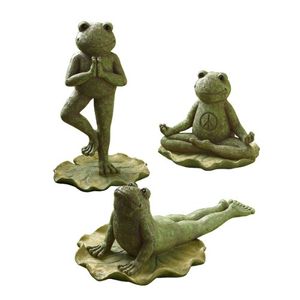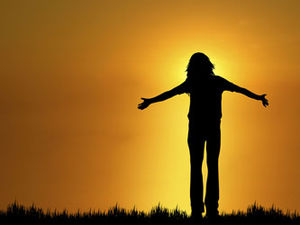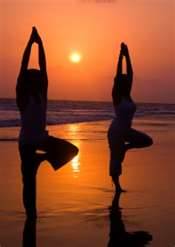In my Arthritis Workshop this weekend at Yoga Works I will be discussing Vinyasa Flow. This type of yoga links the breath with movement and often incorporates a vigorous practice. Additionally, teachers tend to use the cue “Vinyasa” as a way to verbally cue students to run through the sequence Plank >Chaturunga>Up dog> Down dog in between other poses. This sequence of poses can be very challenging, but invigorating. Also, this “Vinyasa”can be modified, shortened, and has many variations. All of which I will be discussing and teaching in my workshop this Saturday.
Below is part of an article that Shivea Rea wrote for Yoga Journal.com. I hope it sheds a little light on what Vinyasa means, both physically and spiritually.
Consciousness in Motion
By Shivea Rea
Vinyasa yoga teaches us to cultivate an awareness that links each action to the next—on the mat and in our lives.
Sit back and relax. Take in these images and see if you can sense the underlying pattern: the flow of the seasons, the rise and fall of the tides in response to the moon, a baby fern unfurling, a Ravi Shankar sitar raga or Ravel’s “Bolero,” the creation and the dissolution of a Tibetan sand mandala, the flow of Surya Namaskar (Sun Salutation).
What do these diverse phenomena have in common? They are all vinyasas, progressive sequences that unfold with an inherent harmony and intelligence. “Vinyasa” is derived from the Sanskrit term nyasa, which means “to place,” and the prefix vi, “in a special way”—as in the arrangement of notes in a raga, the steps along a path to the top of a mountain, or the linking of one asana to the next. In the yoga world the most common understanding of vinyasa is as a flowing sequence of specific asanas coordinated with the movements of the breath. The six series of Pattabhi Jois’s Ashtanga Vinyasa Yoga are by far the best known and most influential.
Applying vinyasa in your yoga practice and daily life has many parallels not just to building a house but also sailing a boat. Like sailing, moving through life demands a synchronization with natural forces that requires skill and intuition, the ability to set a course yet change with the wind and currents. If you want to sail, you have to know how to assess the conditions of the weather—blustery, calm, choppy—which constantly fluctuate, as do our physical, emotional, and spiritual states.
The teachings of yoga include a view called parinamavada, the idea that constant change is an inherent part of life. Therefore, to proceed skillfully with any action, we must first assess where we are starting from today; we cannot assume we are quite the same person we were yesterday. We are all prone to ignoring the changing conditions of our body-mind; we often distort the reality of who we are based on who we think that we should be. This can show up on the yoga mat in any number of inappropriate choices: engaging in a heating, rigorous practice when we’re agitated or fatigued; doing a restorative practice when we’re stagnant; going to an advanced yoga class when a beginning class better suits our experience and skills. In order to avoid such unbeneficial actions, we need to start out with an accurate assessment of our current state.
So what are the observations a good yogic sailor should make before initiating a vinyasa? Like checking out the boat, wind, and waves before you sail, an initial survey of your being can become an instinctive ritual. Ask yourself: What is my energy level? Am I raring to go? Holding any tension? Am I experiencing any little physical twinges or injury flare-ups? Do I feel balanced and ready to sail into my practice? How is my internal state? Am I calm, agitated, focused, scattered, emotionally vulnerable, mentally overloaded, clear and open?
These questions are relevant to how we begin any action, not just our asana practice. In choosing what foods we eat, when we sleep, our conversations and our actions with others—everything that we do—we must understand where we are coming from and choose actions that address any imbalances.
In teaching my students about vinyasa, I offer them ways of checking in with their current state at the start of their session. I also will suggest specific strategies for addressing impediments that may break up the flow of their practice. For example, on the bodily level students can choose a more calming practice or one that provides them with a more invigorating opening. If they have a twinge in the lower back, they might want to modify certain postures, perhaps substituting Bhujangasana (Cobra Pose) for Urdhva Mukha Svanasana (Upward-Facing Dog Pose). If they’re suffering from typical urban tensions in the neck and shoulders, they can use a small series of stretches—a mini-vinyasa, you might say—to encourage softening and release. On a more internal level, agitated students can focus on releasing tension by relaxing the face and breath; if their energy is more lethargic and diffused, they can focus on their drishti, or gaze, to increase their concentration.
The same insight that we use on the yoga mat can be applied to the way that we initiate actions elsewhere in our lives. Are you feeling anxious on your way to a big appointment? Drive more slowly and listen to some calming music to ensure that this imbalance doesn’t carry over into your meeting. Such adjustments do not show an unwillingness to accept what is or a compulsive attempt to fix everything until it is just right. Rather, they are evidence of a deep awareness of and appropriate response to reality. A yogic sailor embraces the changing winds and current and the challenge of setting course in harmony with the ebb and flow of nature.
 From Daily Om- written by Madisyn Taylor ( partial article)
From Daily Om- written by Madisyn Taylor ( partial article)






